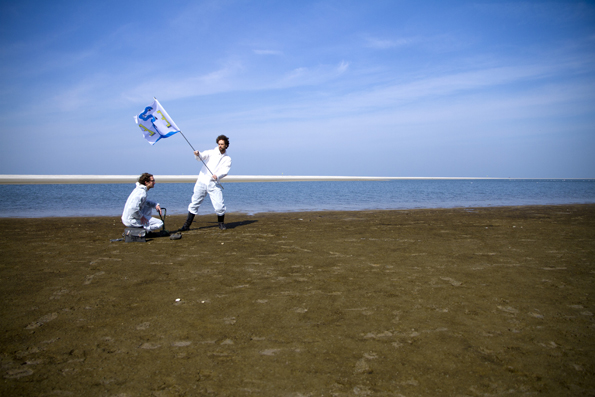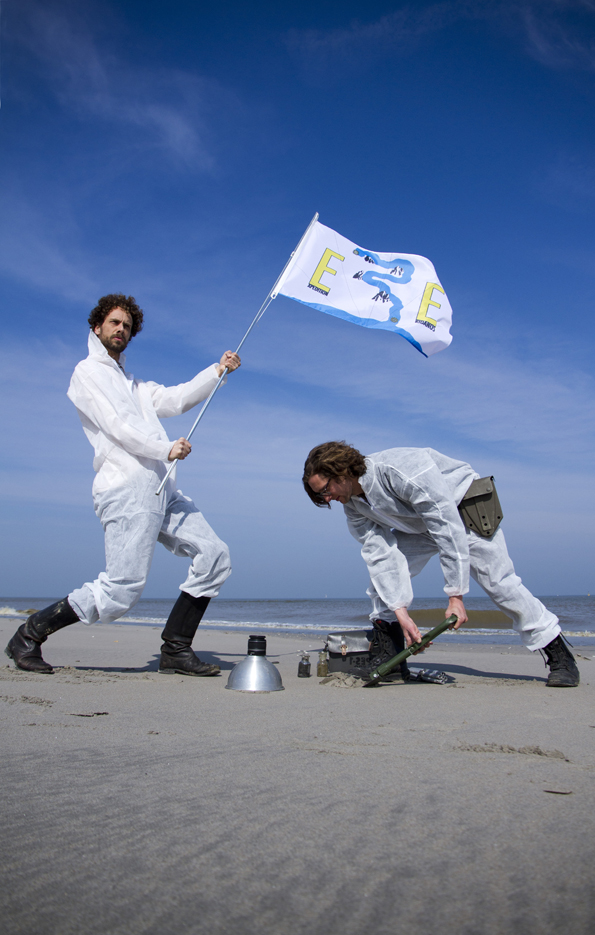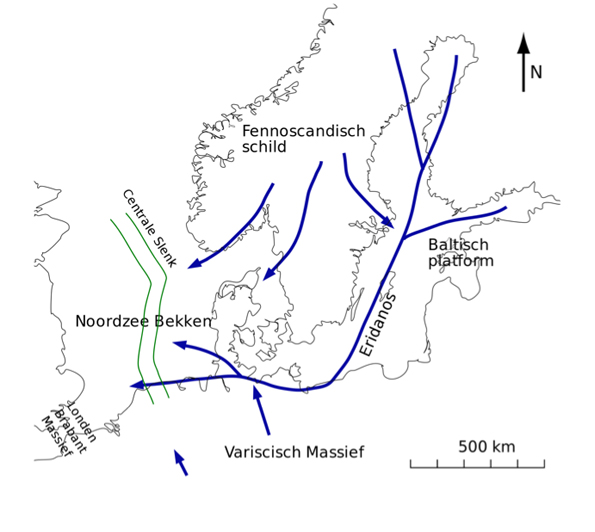Support research fieldtrip 'Expedition Eridanos' (NL-LT)
| 2014-02-27 14:33:21
CONNECTING THE NETHERLANDS TO LITHUANIA:
NORTH SEA TO BALTIC SEA - EXPEDITION ERIDANOS
Travelling from the Zandmotor Spit in The Netherlands to the Curonian Spit in Lithuania. During 'Expedition Eridanos' philosopher Bram Esser and designer Francois Lombarts aim to follow the origins of the making of The Netherlands to the roots in the northern Baltic Sea by tracing the mythological river 'Eridanos' on foot. According to the myth this river deposited the sands that we now use to protect our Dutch shores.
Your donation makes this endavour possible!
Transfer your generous donation to the bankaccount of stichting Satellietgroep, The Hague, NL:
IBAN:NL43TRIO0390467332
BIC:TRIONL2U
In return you'll receive exclusive reports by Esser and Lombarts during the research fieldtrip.
Start at the Sandengine: as you can see the Sandengin is now a spit with lagoon.


Photo: Machiel avec Pleijsier: www.avecpleijsier.nl

The Eridanos is a geological theory of a prehistoric river, believed to have run through Northern Europe. It is described to have been Europe’s greatest river, comparable in size and influence to the current day Amazon. It had its source in Lapland and ran down through the Baltic States, Poland, Germany and built an immense delta and essentially gave birth to the Netherlands. The river Eridanos slowly transformed during and after the last ice age, it became a sea, the Baltic Sea.
The journey is a quest, a form of physical geography, a long trek along the supposed route of mythical Eridanos towards its and our origin. It is a physical artistic study, based upon the ‘10 rules for New Travel’, a collection of rules formulated by philosopher Bram Esser. The manifesto was inspired by the Danish Dogma film manifesto, which was intended as a quest for meaning in an technology dominated film industry. The rules for the post-traveler can be seen in the same light and are meant as a set of rules making it actually more difficult to move from one place to the other. Experience is the result of overcoming these difficulties.
The '10 rules for New Travel’ are:
1.Time.
The post-traveler travels slowly, not fast.
2. Space.
The journey itself that the post-traveler undertakes defines the region.
3. Destination.
The post-traveler has no destination other than to be inside the landscape.
4.Travel.
The manner of travel should be chosen carefully.
5. Direction / Compass.
The post-traveler does not use existing routes, but creates his own route or rediscovers lost supposed routes.
6. Stopping.
The post-traveler stops when the time has come to tie a knot in the day.
7. Settling.
The post-traveler who seeks to establish himself as an inhabitant must rediscover/redefine his surroundings as his residence.
8. Experience.
The Post-traveler looks at his surroundings with soft eyes, only focusing now and than on the things that catch his attention.
9. Symbols.
The post-traveler navigates on stories and not on facts.
10. Identity.
The post-traveler writes a narrative of his experience in order to redefine his place in the world.
Links:
www.bramesser.com
www.francoislombarts.com
Links to previous projects:
http://www.satellietgroep.nl/archief/1/esser_bram_nl
http://www.satellietgroep.nl/stellingname/2/bram_esser_39dwaaltochten_rond_schiphol39
http://www.satellietgroep.nl/archief/1/lombarts_francois_nl
http://www.satellietgroep.nl/stellingname/1/francois_lombarts_39ik_wil_inpolderen39
